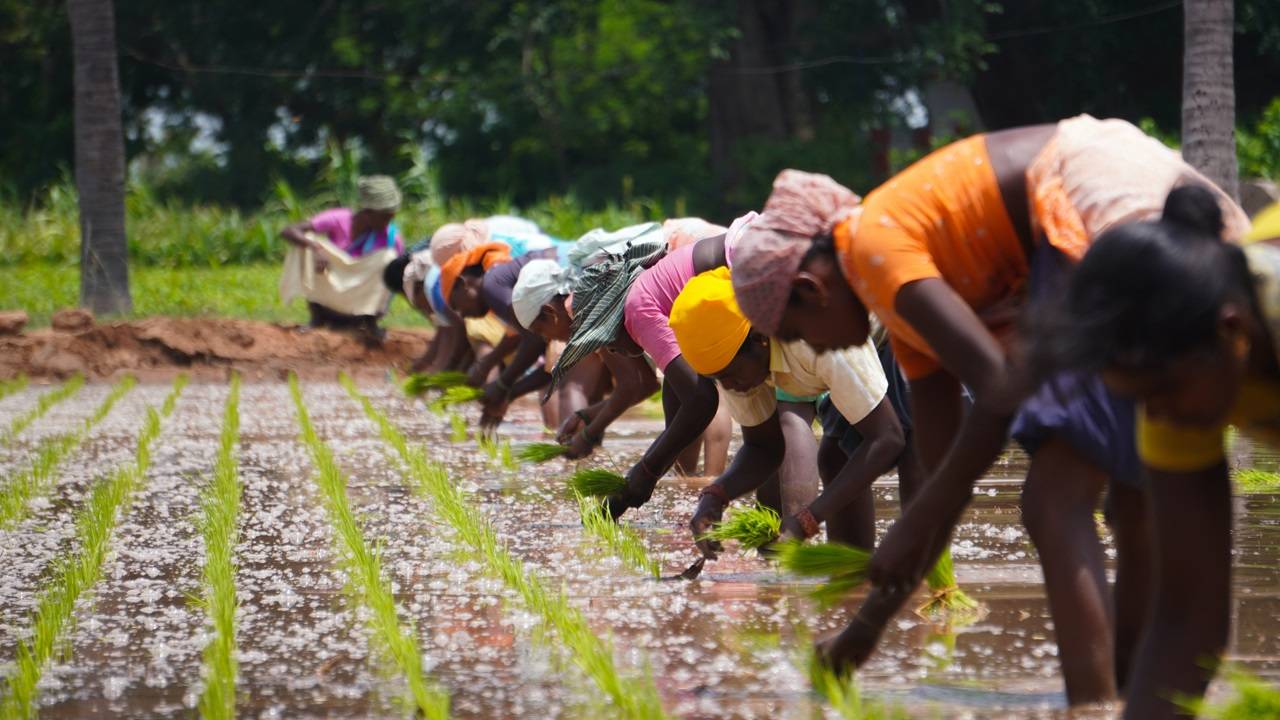
India witnessed a profound evolution in its agriculture sector in the last century, primarily driven by consumption-focused economics. This led to the emergence of intensive production systems, notably in the major river basins of northern and western India.
The success of this agricultural transformation, often termed the 'green revolution,' has had profound social and ecological consequences.
However, amidst the strides made, a crucial aspect has been consistently overlooked – the substantial contribution of women to agriculture in rural India.
A staggering 78% of employed women in India are engaged in agriculture, making it the sector with the highest estimated female labour force participation at 62.9%, as per the Annual Periodic Labour Force Survey (2021-2022).
Despite their significant involvement, rural women are predominantly viewed as laborers on their family farms rather than recognized as "farmers" in their own right.
Data from the Agriculture Census (2010-11) reveals that out of 118.7 million cultivators, 30.3% were females. Similarly, among 144.3 million agricultural laborers, 42.6% were women.
Census 2011 highlights a 24% increase in female agricultural laborers between 2001 and 2011. Economic Survey 2017-18 notes a 'feminization' of the agriculture sector due to rural-to-urban migration by men, showcasing an increasing number of women in diverse roles as cultivators, entrepreneurs, and labourers.
To harness the true potential of women in agriculture, there is a pressing need for policies that place them at the forefront. Recognizing the integrated role of rural women in managing diverse natural resources for household needs, there must be enhanced access to critical resources such as land, water, credit, technology, and training. Ownership of land is particularly transformative, amplifying women's decision-making power within households.
Agriculture Production Cluster (APC): A Holistic Approach
To address the challenges faced by women in agriculture, an inclusive approach is essential. The Agriculture Production Cluster (APC), introduced by organizations like PRADAN, focuses on market demand and systematically addresses production challenges. This approach has proven successful in empowering women by organizing them into Producer Groups (PGs) and promoting Farmer Producer Organizations (FPOs). Scaling this model across the country can catalyze the empowerment of women, providing them with a sense of ownership and agency.
Collaborative Efforts for Gender Equality
To eradicate gender bias in the agricultural sector, concerted efforts from the government, private sector, NGOs, and civil society organizations are imperative. Initiatives should aim to provide women farmers with equal access to resources, including credit, capital investments, sustainable agricultural practices, and advanced farming tools. Creating female-led FPOs and fostering collaboration among them will amplify the voices of women in agriculture, ensuring their concerns are heard.
Empowering women in agriculture is a multi-faceted journey that requires persistent efforts and collaboration. Bridging the gender gaps in agriculture is not an overnight task but demands continuous activation of processes that recognize, respect, and empower women as farmers. The journey towards gender equality in agriculture is a commitment that will unfold over days, months, and years, ultimately reshaping the landscape for the better.
















